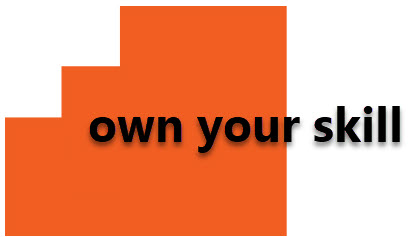Interviewing Tips
Sitting across from a stranger and having them ask questions about you rarely seems like a relaxing activity, especially if you’ve never done it before. Here’s a starting point on how to interview in-person, handle a virtual interview well, and a guide of how to do well on your phone interviews.
Always dress well! Even if you’re having a phone interview, being dressed in your most professional clothes puts you in the mindset of being professional and helps your verbal performance. This goes for video interviews as well – try not to do the “professional from the waist up” look. You might need to get up halfway during the interview and fix your lighting or close your door and you don’t want the person looking to hire you to see your Spongebob pajama pants under your clean pressed blazer. Also remember to dress for the company rather than just in general. For example, you may not necessarily wear a suit and tie to an interview at a construction site. Reaching out for advice or an outfit critique from someone in the field you admire is an excellent way to start. Additional professional attire information can be found here: https://careerservices.wvu.edu/students/dress-to-impress
Do your research: Researching the position and company you are interviewing at is an important way to prepare for the interview. This research can help you answer the question, “What makes you a good fit for XYZ company?” Most companies will have an about section on their website’s homepage. This is a great place to start.
Practice makes perfect: For those of us who are shy, the only way to overcome interview terror is to do it more often. Talking to people you admire even outside of an interview setting can help you become more comfortable. You can even use this excuse to network with someone whose job you admire. Set up a practice interview with them and work out those nerves.
Know the basic format: Each interview starts with the basic question; tell us a little bit about yourself. This is your opportunity to make your elevator pitch, a 60-90 second speech about who you are and what your qualifications and interests are. Next, the interviewer will likely explain different components of the job in question. During this time, you can sprinkle in similar experiences you have had. This is also a good time to show the interviewer you are actively listening. Lastly, the interviewer will likely ask if you have any questions for them. Take this opportunity to connect with the interviewer on a meaningful level.
Answering “What’s your greatest weakness?”: This question can strike fear into the heart of interviewees. But how can you answer this without making the interviewer think you are not qualified for the job? Start by stating a problem you have had in the past. For example, “I have had issues with receiving constructive criticism in the past.” Follow this statement up with how you are actively working on the issue and give some proof that you are indeed improving in that area. A good example of this would be, “However, I have realized over time that constructive criticism exists to make me better as an employee and a person. I have actively been working on taking criticism less personally and my manager at my previous job agreed that I have made progress in the area.” Being honest about your faults and progress will show the employer that you are ready for the new position.
Show your personality: In some positions like sales, teaching or TV production, an outgoing personality can be needed to succeed. While it is important to stay professional during an interview, it can be important to reveal your personality in an appropriate way. If you are being genuine in the interview that will shine through and reflect positively on yourself.
Don’t be afraid to ask questions: Asking your interviewer questions can show that you are an independent thinker who has done their research. Stay away from negative questions and questions about pay scale.
Download these interviewing guides!
